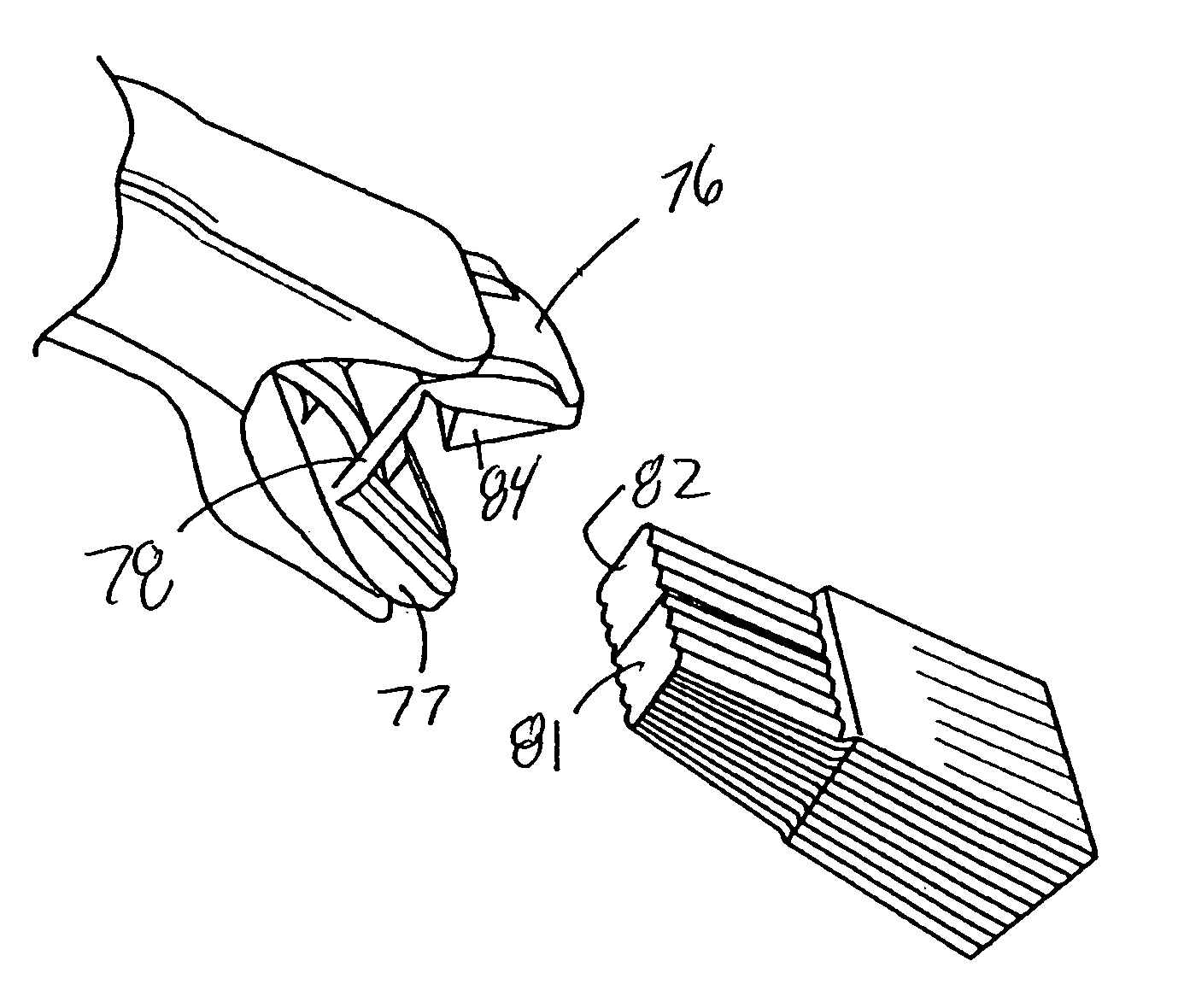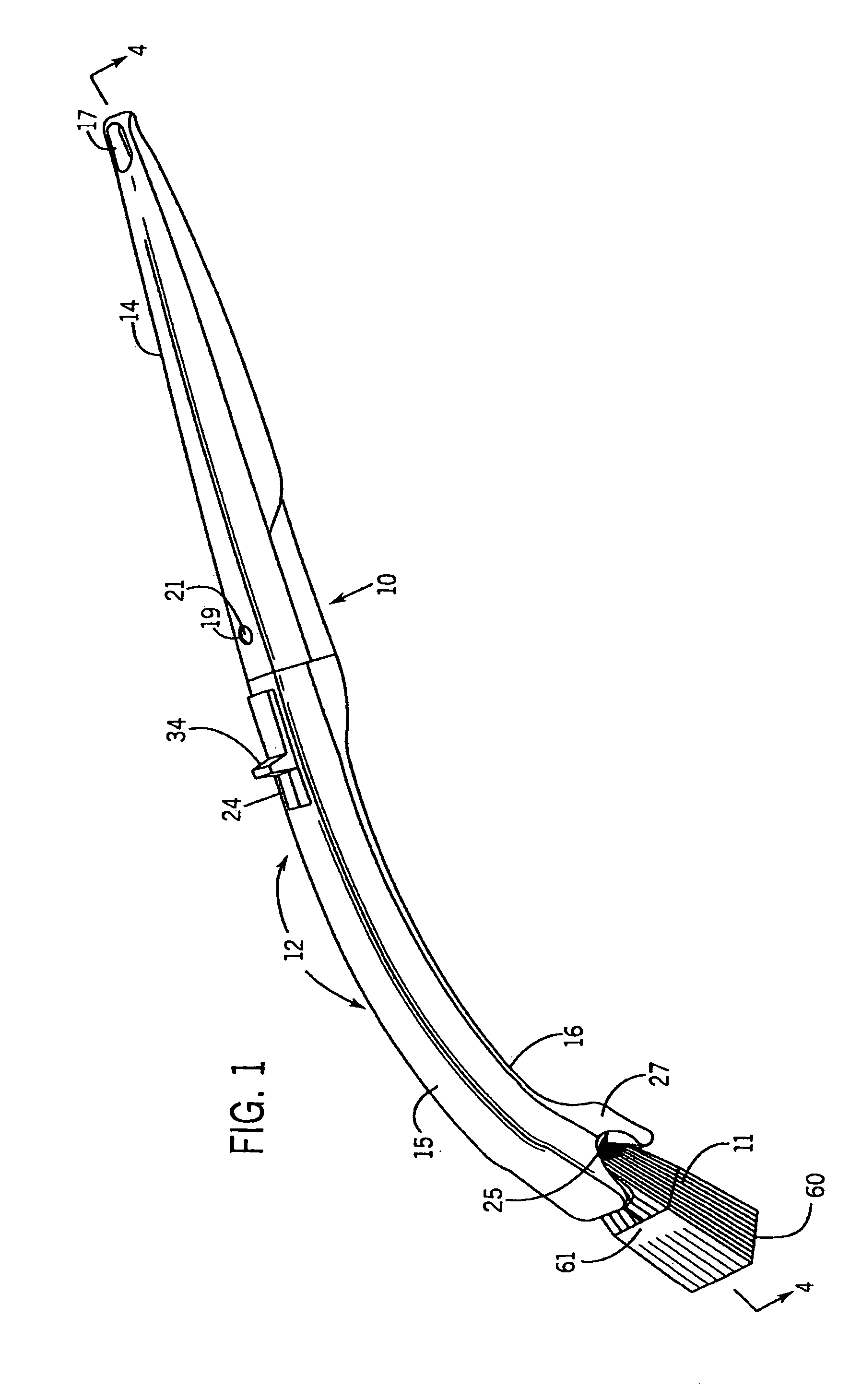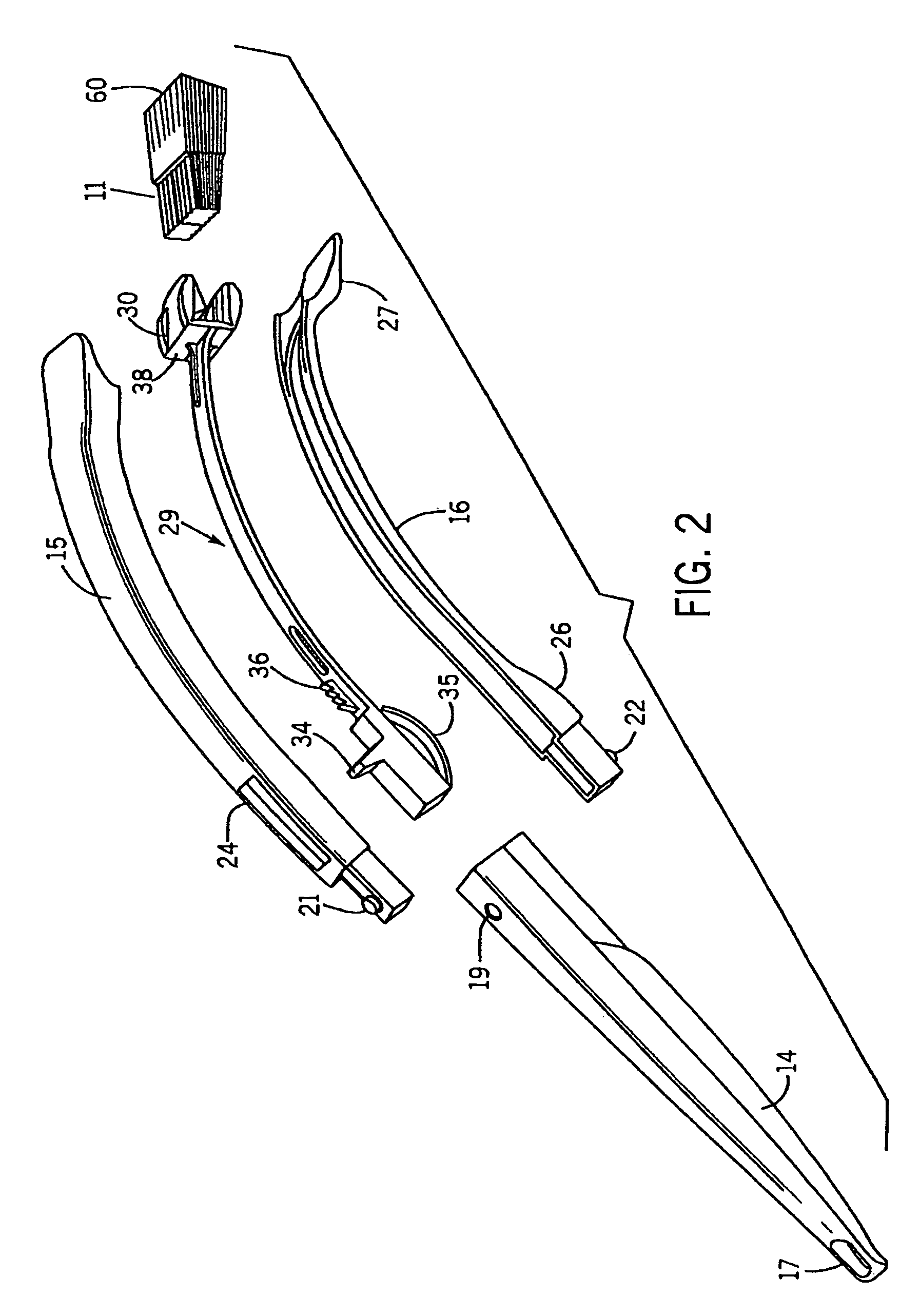Cleaning brush with replaceable/disposable brush head
a brush head and cleaning brush technology, applied in the field of brushes, can solve the problems of brush dripping wet immediately after use, brush can develop an unpleasant smell or appearance, brush can be easily damaged, etc., and achieve the effect of efficient transmission
- Summary
- Abstract
- Description
- Claims
- Application Information
AI Technical Summary
Benefits of technology
Problems solved by technology
Method used
Image
Examples
Embodiment Construction
[0061]In FIGS. 1–6 there is depicted a toilet brush (generally 10) having a disposable brush head 11 and a multi-part wand / handle (generally 12). FIGS. 2 and 4 depict that the wand 12 can be assembled from an extension 14, and upper and lower clam shell housing parts 15 and 16. The extension 14 is preferably largely hollow to reduce weight, and is formed with a hole 17 for assisting in hanging up the wand 12 (or the wand 12 with an unused brush head 11 connected thereto) between uses (for example on a nail or a hook).
[0062]Near the opposite end of the extension 14 are radially extending holes 19 and 20 that are suitable to receive corresponding snap parts 21 and 22 of the housing parts 15 and 16. The housing part 15 has a radial slot 24 on one surface and an arcuate inner channel along its opposite surface. The housing part 16 has a corresponding arcuate inner channel along its upper surface extending to a rear depressed area 26. When the housing parts 15 and 16 are assembled togeth...
PUM
| Property | Measurement | Unit |
|---|---|---|
| internal diameter | aaaaa | aaaaa |
| height | aaaaa | aaaaa |
| thickness | aaaaa | aaaaa |
Abstract
Description
Claims
Application Information
 Login to View More
Login to View More - R&D
- Intellectual Property
- Life Sciences
- Materials
- Tech Scout
- Unparalleled Data Quality
- Higher Quality Content
- 60% Fewer Hallucinations
Browse by: Latest US Patents, China's latest patents, Technical Efficacy Thesaurus, Application Domain, Technology Topic, Popular Technical Reports.
© 2025 PatSnap. All rights reserved.Legal|Privacy policy|Modern Slavery Act Transparency Statement|Sitemap|About US| Contact US: help@patsnap.com



